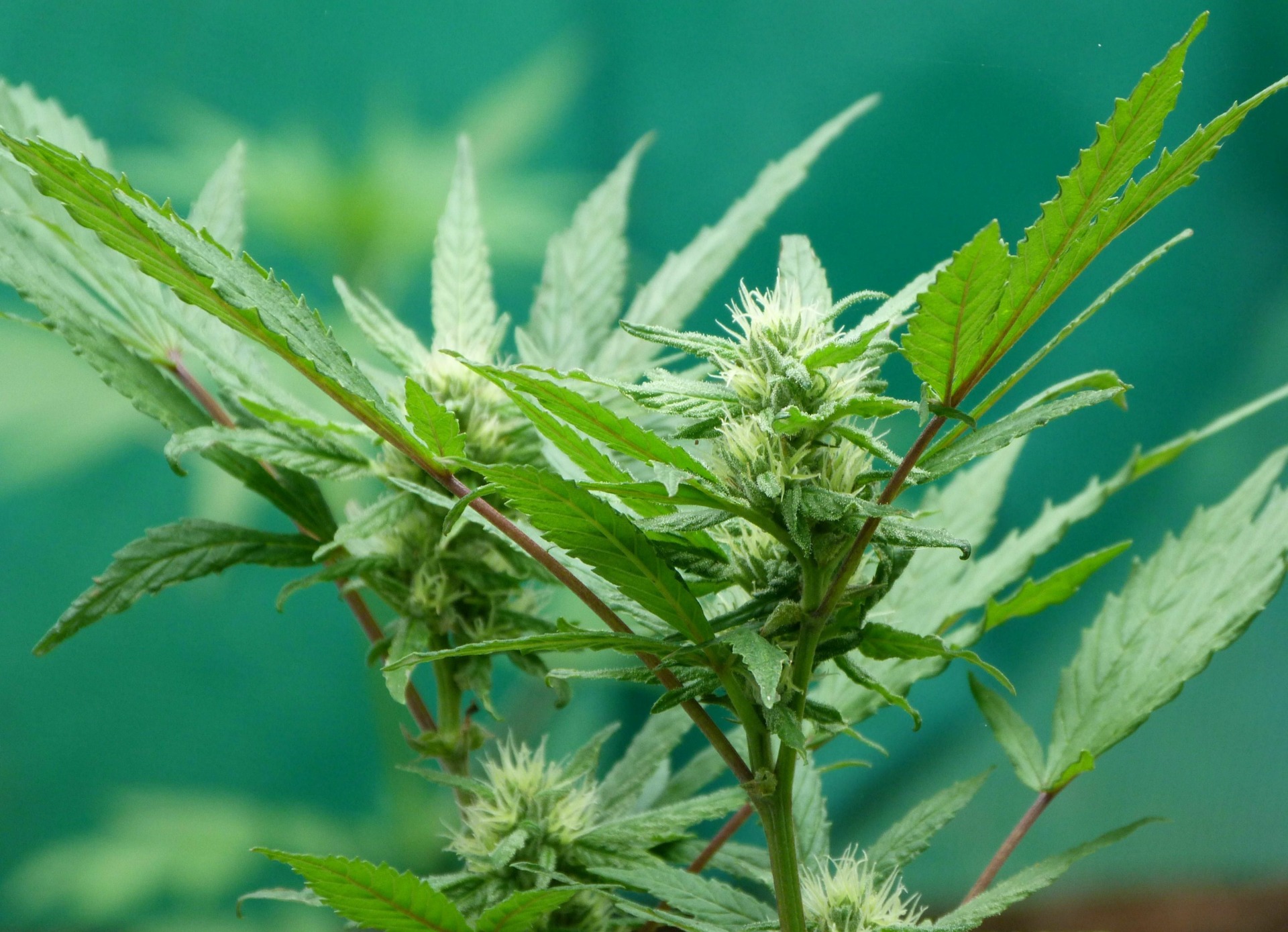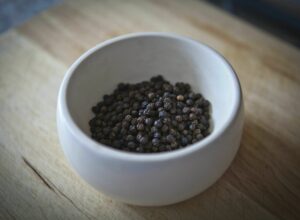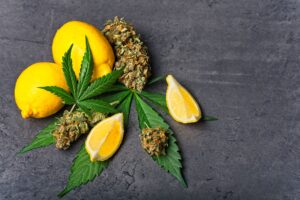With hundreds of known chemical compounds, the cannabis plant has a lot of medicinal potential. But these compounds—which include cannabinoids, well-known chemicals like tetrahydrocannabinol (THC) and cannabidiol (CBD), plus terpenes, fragrant oils that also have their own therapeutic effects—come in many different combinations. And these numerous mixtures can produce many different effects.
FOLLOW US ON FACEBOOK & INSTAGRAM
For those relying on cannabis as a medicine, this can be a confusing situation. The compounds present in your cannabis can have a big effect on whether it will be helpful for your condition or create unwanted outcomes.
Thankfully, scientists have been studying this complicated picture and continue to offer new insights into how these differing chemicals interact. Let’s take a look at the science behind this fascinating phenomenon, and find out which combinations of terpenes and cannabinoids may be right for you.
Understanding the Entourage Effect
Cannabis is an extremely diverse plant, which can lead to big differences in the way one cannabis product affects you relative to the next. From cannabinoids to terpenes, there are hundreds of different active compounds that may express themselves in any particular plant.
While research is still limited (and usually focused on the most plentiful cannabinoids and terpenes), there’s a fair bit of data coming out about the effects of these varying chemicals. We understand the basic effects of most cannabinoids and terpenes, and there’s information out there about these common chemical compounds.
But while many like to focus on the effects of individual cannabinoids or terpenes, the truth is even more complicated. These chemicals interact with each other in many different ways.
More than understanding what each chemical does on its own, it’s also important to understand the ways in which these chemicals interact with each other. This combining of chemical compounds is called the entourage effect, and its many different mixtures can be hard to track.
A common example of the entourage effect is the way that the terpene myrcene affects the cannabinoid THC. While THC is usually considered to have energetic effects, when mixed with enough myrcene, its effects become sedative and can lead to cannabis’s notorious couch-lock—when the consumer becomes too lethargic to move and feels stuck on the couch.
RELATED: CANNABIS TERPENES PACK A THERAPEUTIC PUNCH
If you were just paying attention to the THC levels, and researching THC’s effects, you may think THC-rich cannabis would give you an energy boost. But the presence of myrcene flips the effect on its head and produces the opposite of what you were expecting.
The lesson is that it’s crucially important to understand the many ways the entourage effect can alter cannabis’s medicinal outcomes.
Which Terpene-Cannabinoid Interactions Could Help Me?
While there’s a lot to learn about cannabinoid and terpene interactions, scientists have been studying the phenomenon and have noticed a few combinations with useful effects. One study, by cannabis researcher Dr. Ethan Russo highlights a few of the ways that cannabinoid and terpene combinations could be used for healing.
Here are five combinations of cannabinoids and terpenes that may help you:
1. Limonene Negates THC’s Poor Effect on Memory
Have you ever felt like your memory isn’t as sharp as usual after taking cannabis? It’s not surprising, as THC, the most common cannabinoid in cannabis, is known to cause some short- term memory issues. But does THC have to perform this disappearing act on our recent memories?
In the history of cannabis, medical minds from around the globe—as far back as 10th century Persia—say there’s another option: citrus fruits. These cannabis experts suggested that drinking lemonade or eating acidic fruits may allow patients to enjoy a cannabis treatment without the negative effects on memory.
In recent times, scientists believe that this suggestion has to do with limonene —a powerful terpene that’s present in both cannabis and citrus. Those trying to experience THC’s powerful medicinal properties without memory issues can try marijuana strains high in limonene like:
Or you can always try the prescription from the 1800s and drink a glass of fresh-squeezed lemonade with your cannabis.
2. Linalool, Limonene & CBD Make a Good Combo to Help Combat Anxiety
Feeling anxious? Research shows CBD, cannabis’s second-most
plentiful cannabinoid, can greatly aid in reducing stress and creating feelings of calm and relaxation—and some terpenes may help boost this effect.
Both limonene and linalool are known to reduce anxiety, and Dr. Russo suggests they may add to the clinical efficacy of CBD. So, if you want to relax and unwind, find a linalool and limonene-rich CBD product to enjoy, and feel your stress melt away.
3. CGB & Pinene Work Together as an Antiseptic for MRSA
While cannabis is rarely looked at as a cure for infectious diseases, the combination of the cannabinoid cannabigerol (CBG) and the terpene pinene could help in treating Methicillin-resistant Staphylococcus aureus (MRSA).
MRSA is a bacterial infection that’s resistant to many of our antibiotic treatments. But research shows that CBG can inhibit MRSA.
To add to this, other research looking at pinene has found that a mixture containing 34.8% pinene was also effective against MRSA and other bacterial strains that are resistant to antibiotic treatments.
So, Dr. Russo suggests that a combination of pinene and CBG could help combat this resistant infection.
Consuming cannabis with CBG and pinene may give you a boost if you’re fighting off an infection. Still, this treatment hasn’t been fine-tuned and tested, so it should only be used as an addition to your doctor-recommended regimen. If you believe you have MRSA or another serious infection, you should head straight to your doctor—not your dispensary.
4. Beta-Caryophyllene, Myrcene & Pinene Can Help CBD Fight Addiction
Addiction is a difficult cycle to break, but research suggests that CBD can aid in the process. As a nonaddictive cannabinoid that reduces pain, anxiety and depression, CBD can:
- Help people with the pain of withdrawal
- Replace addictive substances like painkillers or recreational drugs
- Reduce cravings
But can terpenes help even more in the fight against addiction?
According to the research: yes. In one clinical trial, the vapor from black pepper was shown to help cigarette smokers reduce nicotine cravings significantly. We know that black pepper contains three terpenes, which may help aid in this process:
- Beta-caryophyllene, which may help reduce cravings by interacting with the CB2 receptor
- Myrcene, which may increase sedation
- Pinene, which boosts alertness and focus
For those dealing with addiction or withdrawing from an addictive medication, a high-CBD product with beta-caryophyllene, pinene and myrcene could make things a lot easier.
5. Topical CBD With Limonene, Pinene or Linalool for Acne
The last synergistic combination can lead the way to a clearer complexion. It turns out that CBD may help slow down sebum production: the root cause of acne. Similarly, the terpenes limonene, linalool and pinene all have been shown to reduce acne.
When used as a topical application, a combination of these terpenes and cannabinoids could help stop acne in its tracks—leaving a clean, clear and acne-free face.
Photo credit: Alexander Aguero
If you’re new to cannabis and want to learn more, take a look at our Cannabis 101 index of articles. HelloMD can help you get your medical marijuana recommendation; it’s easy, private and 100% online.






